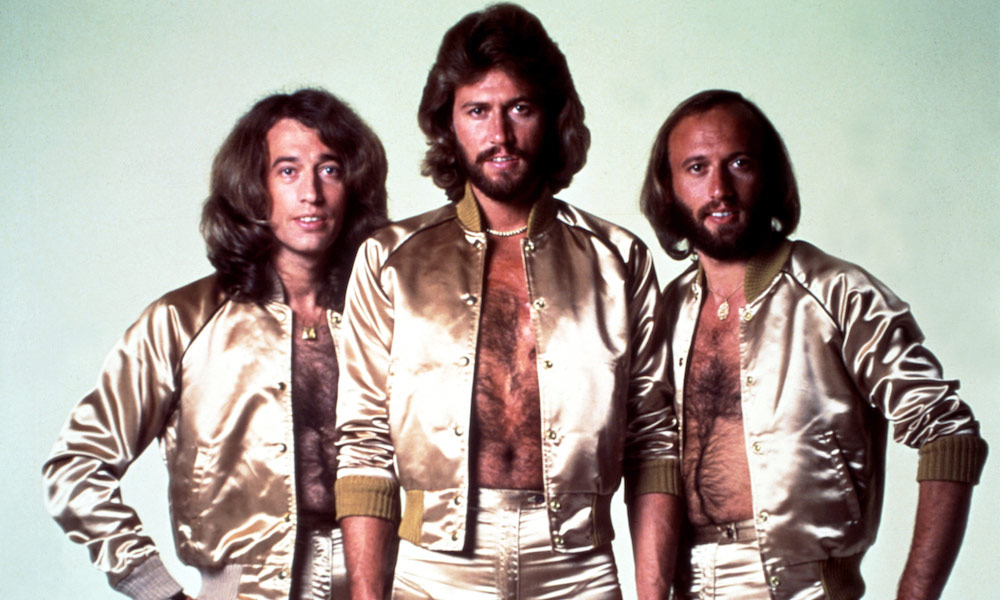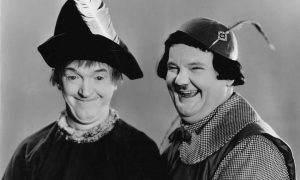Although the Bee Gees are now established as one of the most popular music acts ever, with estimated sales of more than 200 million records worldwide, their disco hits came at a time when the band was struggling. “You’ve got to remember, we were fairly dead in the water at that point,” Barry Gibb, the eldest sibling, admitted in 2013. “The Bee Gees’ sound was basically tired. We needed something new. We hadn’t had a hit record in about three years.”
The band’s manager Robert Stigwood bought the film rights to a magazine article entitled “Tribal Rites of the New Saturday Night” and hired John Travolta to star in a Hollywood adaptation. “The Bee Gees weren’t even involved in the movie in the beginning,” said Travolta once. “I was dancing to Stevie Wonder in rehearsals.”
When Stigwood ran into problems using Wonder’s music, he rang the Bee Gees, then living on the Isle of Man for tax reasons, and asked them to come up with songs for the movie, sending them a rough film script. They never got round to reading the early screenplay, however, because they immediately headed for the Chateau D’Heuroville studio, in France, to mix a live album called Here at Last… Bee Gees… Live, which they’d recorded in Los Angeles just before Christmas.
Thinking about the rough brief from Stigwood to come up with songs “about this guy who works in a paint store and who goes out on Saturday night,” the group used a free weekend to write five extraordinary new songs: “Night Fever,” “Stayin’ Alive,” “More Than a Woman,” “How Deep Is Your love,” and “If I Can’t Have You.” “These songs were gold dust. I can’t think of any other composers you could have asked that of and had them come back with that, having not read the script,” Bill Oakes, the producer who won a Grammy for the soundtrack to the film, said in the 2020 documentary The Bee Gees: How Can You Mend a Broken Heart.
“More Than a Woman,” which was co-written by all three brothers, was one of the film’s romantic highlights, providing a moving musical background to a dance between Travolta and his love interest, as the band’s soaring emotional lyrics – “Here in your arms I found my paradise/My only chance for happiness/And if I lose you now I think I would die” – play in the background.
The recording
After the initial discussions, Stigwood and Oakes flew to France to listen to demo versions of the five songs. The Bee Gees started recording in February 1977 at Chateau D’Heuroville, with Albhy Galuten acting as co-producer. Barry Gibb and Galuten worked painstakingly on the drum part of “More Than a Woman,” eventually using the same loop on the song that they’d devised for “Night Fever.”
When Oaks arrived in France, he was surprised at the state of the recording studio. “Elton John had done his album Honky Château there. I thought, ‘Well, how bad can it be?’ When I got there, I was appalled, it looked like a garage.” However, when he and Stigwood heard the rough demos, with the Gibb brothers recorded together using just one mic, they were delighted. “They flipped out and said these will be great, even though we still had no real concept of the movie,” said Barry Gibb.
The Bee Gees honed their version of “Night Fever” at Criterion Studios in Miami, in April, by which time it had been decided to give “If I Can’t Have You” to Yvonne Elliman. “More Than a Woman” had also been given to an R&B/funk group called Tavares, so the Bee Gees version was left unfinished. The film studio then decided that both versions of “More Than a Woman” would appear on the soundtrack album so, in September 1977, the Bee Gees hastily put the finishing touches on their song at Cherokee Studios, Los Angeles, before mixing it.
In that final version, the Bee Gees underpinned their gorgeous falsetto harmonies with a steady disco groove from Maurice Gibb (on bass guitar), Barry Gibb and Alan Kendall (guitars), Dennis Bryon (drums), Blue Weaver (keyboards), and Joe Lala (percussion). They also added strings, courtesy of arrangements from Wade Marcus.
The reception
The soundtrack album to Saturday Night Fever was released on November 15, 1977, and quickly became one of the best-selling albums in history, with more than 40 million copies of the double album sold worldwide. It won the Grammy for Album of the Year and, in 2013, was added to the Library of Congress’s National Recording Registry.
Although the single to “More Than a Woman” was never released in the UK or the USA, it was issued in Italy. The song has stayed popular in the digital era, with more than 17 million streams in the UK alone by early 2021. The song, which was a staple of the group’s live sets until Maurice Gibbs’s death in 2003, was also covered by another all-male trio, boy band 911, who took it to Number 2 in the charts in 1998.
Although “More Than a Woman” has its own special place in the history of disco, for Maurice Gibb it was always just a “beautiful ballad” that struck a chord with the public. ““More Than a Woman” was a song we wrote with unimaginable results,” he said. “Tavares had a big hit with it. It was one of the songs that made Saturday Night Fever such a success, and then the whole world was dancing.”
For more Bee Gees, check out our list of the best Bee Gees song ever.




